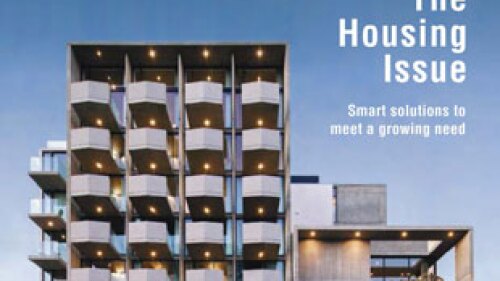For over 30 years, Kay Granger has advocated for cities and supported the revitalization of downtown Fort Worth, Texas. From her roots as a Fort Worth planning commissioner through becoming a three-term mayor of that city and the current congresswoman for Texas’s 12th District, Granger says we must “fight for cities—they are where it’s happening. All the expansion is there. We need to make sure they are successful.” She says that the federal government partners with cities on water, highway, and other projects, many of which require a local match to come first. She asks how the federal government can “walk away,” saying, “We [the federal government] must complete what we committed to and encourage ULI to make ensuring ongoing federal partnerships with cities part of their agenda.”
Granger also encouraged ULI to focus on “dealing with the jobs we lost” and urged members to push Congress to stay committed to continued spending on infrastructure as a solution to job creation. She is also enthusiastic about public/private partnerships, saying they “make all the difference in the world.” The congresswoman advises staying optimistic, holding government’s feet to the fire while giving it support and input.
Speaking specifically to her commitment to cities and partnerships, Granger described her experience in Fort Worth as teaching her the “value of partnerships to revitalization.” She says that downtown Fort Worth’s revitalization was largely due to the efforts of Downtown Fort Worth, Inc. (DFWI), a public/private partnership formed in 1981 at the beginning of that city’s renaissance. To support the downtown renaissance, DFWI forged partnerships with the city, property owners, business developers, and corporations. Now, Granger says, downtown Fort Worth is a national model for exciting, safe, and walkable urban areas. DFWI continues to partner with the city and leadership groups not limited to the Fort Worth Chamber, Arts Council, Convention and Visitors Bureau, Hispanic Chamber of Commerce and Association of Realtors, and Trinity River Vision Authority.
While many of the steps taken by Fort Worth to revitalize its downtown have been successfully replicated elsewhere, Granger cautions that revitalization “didn’t happen overnight.” She points to the Trinity River project as one of the long-term success stories that contributed to the city’s renaissance. The project grew out of a late-1980s Mayor’s Design Institute course in which Granger participated as Fort Worth’s mayor. While she attended the course to get advice on fixing a freeway dividing the city’s downtown, Design Institute experts focused on the Trinity River and its potential to become an asset to the city by providing a connected open-space amenity. While the recession delayed a 1990s plan developed by consultants, Granger says the city stayed focused on their vision and started treating the river as the asset they believed it should be. With the uptick of the economy, the Trinity Vision Authority was formed and a new river planning process was initiated. The new process led by the authority includes Fort Worth, the Army Corps of Engineers, the Tarrant Regional Water District, and others as partners. The ultimate plan will mobilize resources to restore and revitalize 88 miles (141 km) of river as a community asset. Granger points to over 200 community meetings to forge a public vision for the project.
Listing the benefits of the Trinity River Partnership to Fort Worth, Granger cites the ability of the city to redevelop 800 acres (324 ha) of brownfields that doubled the size of its downtown and enhanced its flood control infrastructure, ecosystem restoration, and recreation facilities. An analysis showed economic benefits that include a $1.1 million per annum sales tax revenue increase, $1.6 billion per annum in new business activity, 16,000 new and permanent jobs, and 10,000 new residential units.
Partnerships, vision, and tenacity led to the success of the project and Granger says Fort Worth had to push its Corps of Engineers partner to do things that weren’t part of its primary mission. She emphasizes that the project’s success was due to a “constant and everyday planning process that started with baby steps” and adds that “public/private partnership is the key and most important thing.” Granger also cautions that in the future, these partnerships “may look different than in the past, because government isn’t going to do it all.”



